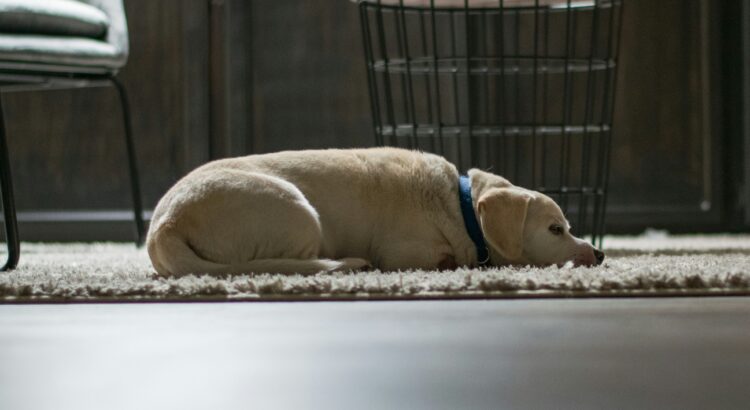Please read the following post for important information on how I’ve chosen my recommendations:
TLDR: North Americans spend 80-90% of their time indoors and when a house is carpeted, you’re inhaling a lot of VOCs, which aren’t healthy and can cause short-term issues like dizziness and long-term issues, too.
Why you should care: Carpets trap dust, bacteria, mold and VOCs. New carpets give off VOCs. Old carpets trap VOCs and other chemicals and then let back out in a never-ending cycle. Walking and playing on the carpet can also release chemicals. You, your kids, your pets, your visitors—they’re all impacted.
What you should buy: Don’t buy carpet. Buy area rugs https://organicweaveshop.com/collections/organic-cotton-rugs and rug pads https://www.thegreendesigncenter.com/product/earth-weave-nature-loc-non-slip-rug-pad/
(I didn’t buy an Organic Weave Shop rug made of 100% cotton. It was too pricey for me. I got something from The Citizenry on sale. But I’d still recommend OWS as the best because it’s GOTS certified.)
Many carpets, especially synthetic ones, contain adhesives, dyes, and backings that can off-gas VOCs like formaldehyde, benzene and toluene. https://www.lung.org/clean-air/indoor-air/indoor-air-pollutants/carpets
Floors, walls, and ceilings in buildings can affect air quality by releasing or absorbing chemicals called volatile organic compounds (VOCs). Carpets are known to have the highest ability to absorb and release chemicals compared to other indoor materials. People can be exposed to VOCs by breathing in the air, touching materials like floors that give off these chemicals, or accidentally swallowing dust from the floor. When dust settles on the floor, it can get kicked up again into the air, which can change the amount of VOCs indoors. This is especially true for certain chemicals that are not easily visible or noticeable.
VOCs released from carpets can be divided into two types: primary and secondary emissions. Primary emissions come from VOCs that are not stuck to the carpet, like chemicals used in making the carpet or in the manufacturing process. Secondary emissions come from VOCs that are attached to the carpet and are released later, through things like wear and tear or chemical reactions. Sometimes it’s hard to tell the difference between these two types because the VOCs can move back and forth between being stuck to the carpet and being released into the air. The carpet can also absorb chemicals from the environment and then release them back into the air later.

Primary VOCs usually stop being released after about a year, but secondary VOCs can continue to be released for a much longer time, sometimes as long as the carpet is there. The way VOCs move between the carpet and the air depends on the balance of chemicals, so they can easily shift between being stuck to the carpet and floating in the air. This is important to understand because it helps explain how VOCs affect the air in our homes.
VOC emissions increase when indoor temperatures rise and when indoor humidity increases. https://www.sciencedirect.com/science/article/pii/S0304389421007913
Newer carpets tend to release more secondary emissions than older ones. One study found that improving ventilation could actually increase secondary emissions, particularly from materials that react easily to air changes. https://www.mdpi.com/2076-3417/12/24/12989
https://pmc.ncbi.nlm.nih.gov/articles/PMC5858259
Ceramic, porcelain, and natural stone tiles themselves do not emit VOCs. Some grouts, sealants, and adhesives used in tile installation may contain VOCs, but low-VOC and no-VOC options are available. Unlike carpet, tile does not trap VOCs from other household products, making it better for air quality.
If you HAVE to buy a carpet, look for Green Label Plus-certified carpets, which have lower VOC emissions. Air filters, dehumidifiers, thorough and frequent cleaning and lower room temperatures can help reduce VOC exposure.
CLEANING: Area rugs must be cleaned regularly, front and back and washed at least once a year.
NOTE: The rug pad I chose doesn’t have the GOTS/OEKO-TEX certifications. I had a really hard time finding anything that was remotely affordable. I emailed the founder of Earth Weave and they replied: “This non-toxic rug pad provides both cushion and grip to your area rug without the hazardous chemicals found in most carpet pads. Made with 100% untreated natural wool on the top layer and natural rubber backing for non-slip. These pads contain no synthetic rubber, SBR (Styrene-Butadiene Rubber), or other harmful chemicals. They are safe for everyone including those with chemical sensitivities. Sustainable and completely bio-degradable.
- All-natural — made with 100% wool and 100% natural rubber
- Non-toxic — zero VOC, ultra-low odor, no formaldehyde, insect repellents, mildewcides, fungicides, toxic dyes or PBDEs (flame retardants)
- Safe — for everyone, including the chemically sensitive (based on personal tolerance)
- Eco-friendly — completely renewable resources and 100% biodegradable
More:
https://www.calhealthreport.org/2018/12/13/carpets-cited-health-hazard-especially-children-poor-communities/
https://nchh.org/resource-library/fact-sheet_carpets-and-healthy-homes.pdf
https://www.tandfonline.com/doi/abs/10.3109/10408449609037480
https://www.tandfonline.com/doi/abs/10.3109/13590849509007243
https://www.sciencedirect.com/science/article/abs/pii/S0304389407010291
https://www.thegreendesigncenter.com/product/earth-weave-nature-loc-non-slip-rug-pad/
https://theroundup.org/non-toxic-rug-pads-organic-eco-friendly/
https://theroundup.org/is-felt-biodegradable-and-eco-friendly/
https://www.rugaroundtheclock.com/non-toxic-rug-pads/https://citizensustainable.com/rubber-sustainable/https://healthyhouseontheblock.com/natural-rug-and-organic-rug-pads/
https://hookandloom.com/all-rugs/
https://nestig.zendesk.com/hc/en-us/articles/15625004157463-What-materials-are-the-area-rugs-made-from
https://www.tiscarugs.com/en/cleaning-instructions/
https://willabyshop.com/collections/rugs
https://organicweaveshop.com/collections/organic-cotton-rugs
Image Credit: cover image, Brady Bellini/ in-post image, Lara Albuquerque
